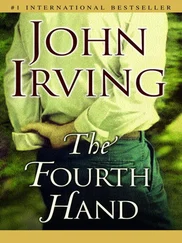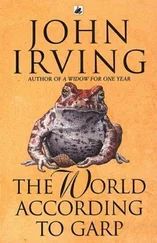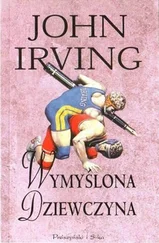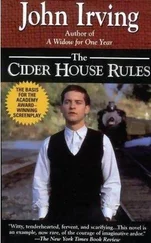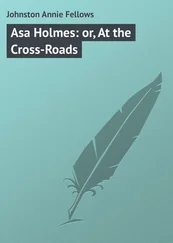John Irving - A Son of the Circus
Здесь есть возможность читать онлайн «John Irving - A Son of the Circus» весь текст электронной книги совершенно бесплатно (целиком полную версию без сокращений). В некоторых случаях можно слушать аудио, скачать через торрент в формате fb2 и присутствует краткое содержание. Город: New York, Год выпуска: 1994, ISBN: 1994, Издательство: Ballantine Book, Жанр: Современная проза, на английском языке. Описание произведения, (предисловие) а так же отзывы посетителей доступны на портале библиотеки ЛибКат.
- Название:A Son of the Circus
- Автор:
- Издательство:Ballantine Book
- Жанр:
- Год:1994
- Город:New York
- ISBN:0-679-43496-8
- Рейтинг книги:3 / 5. Голосов: 1
-
Избранное:Добавить в избранное
- Отзывы:
-
Ваша оценка:
- 60
- 1
- 2
- 3
- 4
- 5
A Son of the Circus: краткое содержание, описание и аннотация
Предлагаем к чтению аннотацию, описание, краткое содержание или предисловие (зависит от того, что написал сам автор книги «A Son of the Circus»). Если вы не нашли необходимую информацию о книге — напишите в комментариях, мы постараемся отыскать её.
, Irving’s characters transcend nationality. They are misfits—coming from everywhere, belonging nowhere. Set almost entirely in India, this is John Irving’s most ambitious novel and a major publishing event.
A Son of the Circus — читать онлайн бесплатно полную книгу (весь текст) целиком
Ниже представлен текст книги, разбитый по страницам. Система сохранения места последней прочитанной страницы, позволяет с удобством читать онлайн бесплатно книгу «A Son of the Circus», без необходимости каждый раз заново искать на чём Вы остановились. Поставьте закладку, и сможете в любой момент перейти на страницу, на которой закончили чтение.
Интервал:
Закладка:
The temple steps were usually crowded; now they were deserted—the flower stalls and the coconut shops were empty of people, too. Everywhere there were only scattered sandals and shoes! At the bottom of the temple stairs, Detective Patel noted the tall woven baskets where the cobras were kept; the baskets were overturned, presumably empty. The snake charmers had fled with everyone else. But where had the cobras gone?
It must have been quite a scene, the deputy commissioner imagined. The worshipers running and screaming, the snakes slithering away. Detective Patel thought that most of the cobras belonging to snake charmers had no venom, although they could still bite.
The puzzle in the photographs was what was missing from the pictures. What had been the crime? Had one snake charmer thrown his cobra at another snake charmer? Had a tourist tripped over one of the cobra baskets? In one second the snakes were loose, in another second people were running out of their shoes. But what was the crime?
Deputy Commissioner Patel sent the snake report back to the Tardeo Police Station. The escaped cobras were their problem. Probably the snakes were venomless; if they were snake charmers’ snakes, at least they were tame. The detective knew that a half-dozen cobras in Mahalaxmi weren’t half as dangerous as Rahul.
At the Mission, Farrokh Is Inspired
It was a surprisingly subdued missionary whom Farrokh delivered to the Jesuits at St. Ignatius. Inside the cloister, Martin Mills exhibited the obedience of a well-trained dog; the once-admired “modesty of the eyes” became a fixed feature of his face—he looked more like a monk than a Jesuit. The doctor couldn’t have known that the Father Rector and Father Cecil and Brother Gabriel had been expecting a loud clown in a Hawaiian shirt; Dr. Daruwalla was disappointed at the almost reverential greeting the scholastic received. In his unpressed Fashion Street shirt—not to mention his haunted, scratched face and his concentration-camp haircut—the new missionary made a serious first impression.
Dr. Daruwalla unaccountably lingered at the mission. Farrokh supposed that he was hoping for an opportunity to warn Father Julian that Martin Mills was a madman; but the doctor was of a considerably mixed mind when it came to involving himself to a greater extent in the newcomer’s future. Furthermore, Farrokh found that it was impossible to get the Father Rector alone. They’d arrived just after the schoolboys had finished lunch. Father Cecil and Brother Gabriel—with not fewer than a combined 145 years between them—insisted on struggling with the scholastic’s suitcase, and this left Father Julian to conduct Martin’s first tour of St. Ignatius. Dr. Daruwalla followed behind.
Since his own school days, Farrokh had spent only intermittent time at the place. He reviewed the examination scrolls in the entrance hall with a detached curiosity. The Indian Certificate of Secondary Education (I.C.S.E.) marked the completion of junior high school. In the Examination Certificate of 1973, St. Ignatius demonstrated its Spanish connection by commemorating the death of Picasso; this must have been Brother Gabriel’s idea. A photograph of the artist was among the photos of that year’s graduates, as if Picasso had also passed the requisite exam; and there were these few words: PICASSO PASSES AWAY. In 1975, the 300th anniversary of Shivaji’s Coronation was commemorated; in ’76, the Montreal Olympics was observed; in ’77, the deaths of both Charlie Chaplin and Elvis were mourned—they were also pictured among the graduates. This yearbook-minded sentimentality was interamixed with religious and nationalistic fervor. The centerpiece of the entrance hall was a larger-than-life statue of the Virgin Mary standing on the head of the serpent with the apple in its mouth, as if she thus circumvented or had altered the Old Testament. And over the entranceway itself were side-by-side portraits—one of the pope of the moment, the other of Nehru as a young man.
Haunted by nostalgia, but more strongly disturbed by a culture that had never become his, Farrokh felt himself losing his faint resolve. Why warn the Father Rector about Martin Mills? Why try to warn any of them? The whole place, perhaps owing its inspiration to St. Ignatius Loyola himself, spoke of survival—not to mention a humbling instinct for repentance. As for the Jesuits’ success in Bombay and the rest of India, Farrokh assumed that the Indian stress on mother-worship gave the Catholics a certain advantage. The cult of the Virgin Mary was just more mother-worship, wasn’t it? Even in an all-boys’ school, the Holy Mother dominated the statuary.
Only a scattering of English names appeared on the examination scrolls, yet passable English was an admissions requirement and fluency in the language was expected of any St. Ignatius graduate; it was the classroom language throughout the school, and the only language posted in writing.
At the student canteen, in the courtyard, was a photograph of the junior school’s most recent trip: there were the boys in their white shirts with navy-blue ties; they wore navy-blue shorts and kneesocks, too—and black shoes. The caption, to this photo said: OUR JUNIORS, INC. OUR MIDGETS AND OUR SUBMIDGETS. (Dr. Daruwalla disapproved of abbreviations.)
In the first-aid room, a boy with a stomach ache lay curled on a cot, above which was tacked a photo of the stereotypical sunset at Haji Ali’s Tomb. The caption that accompanied this sunset was as egregious a non sequitur as any that had thus far been uttered by Martin Mills: YOU ONLY LIVE ONCE, BUT IF YOU LIVE RIGHT, ONCE IS ENOUGH.
Moving on to the music parlor, the doctor was struck by the tunelessness of the piano, which, in combination with the abrasive singing of the untalented music teacher, made it hard for Dr. Daruwalla to recognize even as oft-droned a dirge as “Swing Low, Sweet Chariot.” She was an English teacher, a certain Miss Tanuja, and Farrokh overheard Father Julian explaining to Martin Mills that this time-honored method of teaching a language through song lyrics was still popular with the younger children. Since very few of the children were contributing more than mumbles to Miss Tanuja’s braying voice. Farrokh doubted the Father Rector on this point; maybe the problem wasn’t the method but Miss Tanuja.
She struck Dr. Daruwalla as one of those Indian women who remain uncontained by Western clothes, which Miss Tanuja was wearing with special gracelessness and folly. Perhaps the children couldn’t sing “Swing Low, Sweet Chariot” because they were distracted by the riotous array of Miss Tanuja’s ensemble; the doctor observed that even Martin Mills appeared to be distracted by her. Farrokh cruelly assumed that Miss Tanuja was desperate to marry. She was very round-faced and of a medium, milk-chocolate complexion, and she wore very sharply angled glasses—of the kind with upward-sweeping wing tips embedded with small, bright gems. Perhaps Miss Tanuja thought that these eyeglasses contrasted pleasingly with the smoothness and roundness of her face.
She had the plump, youthful figure of a high-school voluptuary, but she wore a dark skirt that hugged her hips too tightly and was the wrong length for her. Miss Tanuja was short and the dress chopped her legs off at midcalf, which gave Dr. Daruwalla the impression that her thick ankles were wrists and her fat little feet were hands. Her blouse had a reflecting luminosity of a blue-green nature, as if flecked with algae dredged from a pond; and although the woman’s most pleasing quality was an overall curvaceousness, she’d chosen a bra that served her badly. From what little Dr. Daruwalla knew of bras, he judged it to be the old-fashioned pointy type—one of those rigidly constructed halters more suitable for protecting women from fencing injuries than for enhancing their natural shapeliness. And between Miss Tanuja’s outrageously uplifted and sharply pointed breasts, there hung a crucifix, as if the Christ on Miss Tanuja’s cross—in addition to his other agonies—were expected to endure the misery of bouncing on the teacher’s ample but spear-headed bosoms.
Читать дальшеИнтервал:
Закладка:
Похожие книги на «A Son of the Circus»
Представляем Вашему вниманию похожие книги на «A Son of the Circus» списком для выбора. Мы отобрали схожую по названию и смыслу литературу в надежде предоставить читателям больше вариантов отыскать новые, интересные, ещё непрочитанные произведения.
Обсуждение, отзывы о книге «A Son of the Circus» и просто собственные мнения читателей. Оставьте ваши комментарии, напишите, что Вы думаете о произведении, его смысле или главных героях. Укажите что конкретно понравилось, а что нет, и почему Вы так считаете.


